Marshall Hill kids learn to program with Kodable
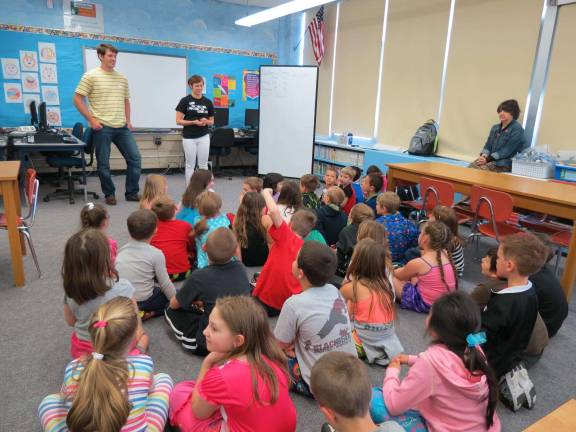
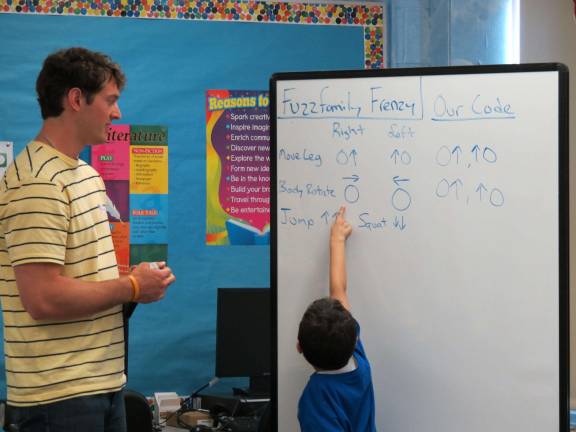
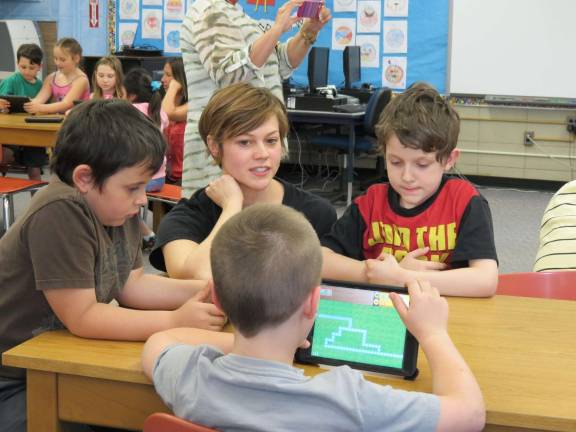
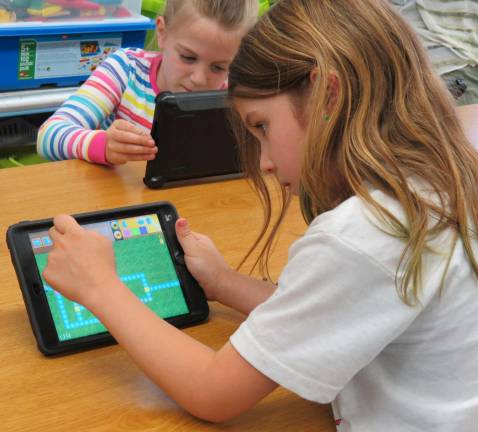
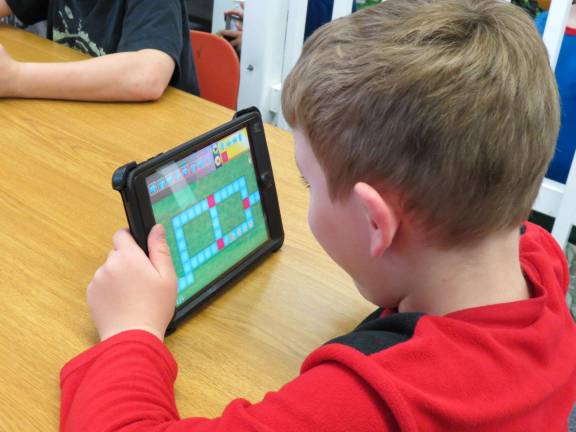
BY PATRICIA KELLER
WEST MILFORD — Kindergarten and first grade students at Marshall Hill Elementary School in West Milford have been using a computer application called “Kodable” that teaches basics of computer programming through a fun, interactive “game.” Two of the founders of Kodable, Gretchen Huebner and Neal Rooney, visited Marshall Hill School before the end of the school year. It was one of their stops on the company’s “Kodable Road Tour.”
The tour included visits to 30 different schools across the country, during which the duo presented lessons on programming to the students. The Kodable Team, based out of California, expects to be able to reach more than 1,500 students during their tour of programming workshops, Huebner said. “Teaching kids coding is something I am passionate about.”
Cynthia Ranieri is the media center specialist at Marshall Hill and has worked together with technology facilitator Laura Oakes to utilize the Kodable program at the school. “It’s a great program for our youngest learners in grades K to 1; it’s learning at the ground floor,” said Principal Paul Gorski.
“Designed for students age 5 and up, Kodable is an engaging program that introduces students to basic computer programming concepts as well as problem solving," said Ranieri in a press release. "Students use the kind of logic necessary in computer programming beginning with the use of if/then statements.”
Kids were fascinatedRanieri said she began using Kodable with her kindergarten and first grade students and “noticed how fascinated they were with the program, and also noticed how the students were determined to succeed in completing the task in getting a character known as a ‘Smeaborg’ through a maze in order to get to the next level.” She added, “These students are using algorithms before even being able to read or pronounce the word!”
The road tourDuring the Kodable Road Tour Programming Workshop, Huebner and Rooney led the students through programming basics using things such as sequence, algorithms, conditions and loops to “program” Huebner (posing as “Robot Gretchen” that needed instructions from humans) to perform a series of tasks. The students learned that a mistake or “error” made in programming is called a “bug” and that fixing the error is called “de-bugging.” The students also learned about “endless commands” using “loops” to repeat parts of a program to make it more efficient, and that directions need to be clear and specific.
After the students successfully “programmed” Robot Gretchen to perform the set task, they repeated the steps to “program” fellow students who were chosen to be a robot. The students then practiced and demonstrated these skills once again using the Kodable app on the Media Center’s iPads to guide their “Smeaborg” characters.
There's an app for thatOakes said that students in grades K-6 love using the Kodable app: “See how they just eat this up; they just devour it!” The students were indeed very excited to use the app, and to try to get their fuzzy “Smeaborg” characters through a maze by using arrows and numbers to program the Smeaborg through a maze.
As students accomplished each level, the program offered congratulations and rewards - unlocking a new Smeaborg character for them to choose to use on their next maze. Each level completed led to smaller sized maze blocks with more complicated maze conditions.
“Understanding the basics of computer programming and preparing students for the technology that awaits them as they learn and grow are the reasons why Kodable was created,” said Ranieri in her release. The Kodable program helps the students “develop basic problem solving skills which they will use not only as they learn to program, but also in their everyday lives!”
For more information on the Kodable program, visit www.kodable.com.